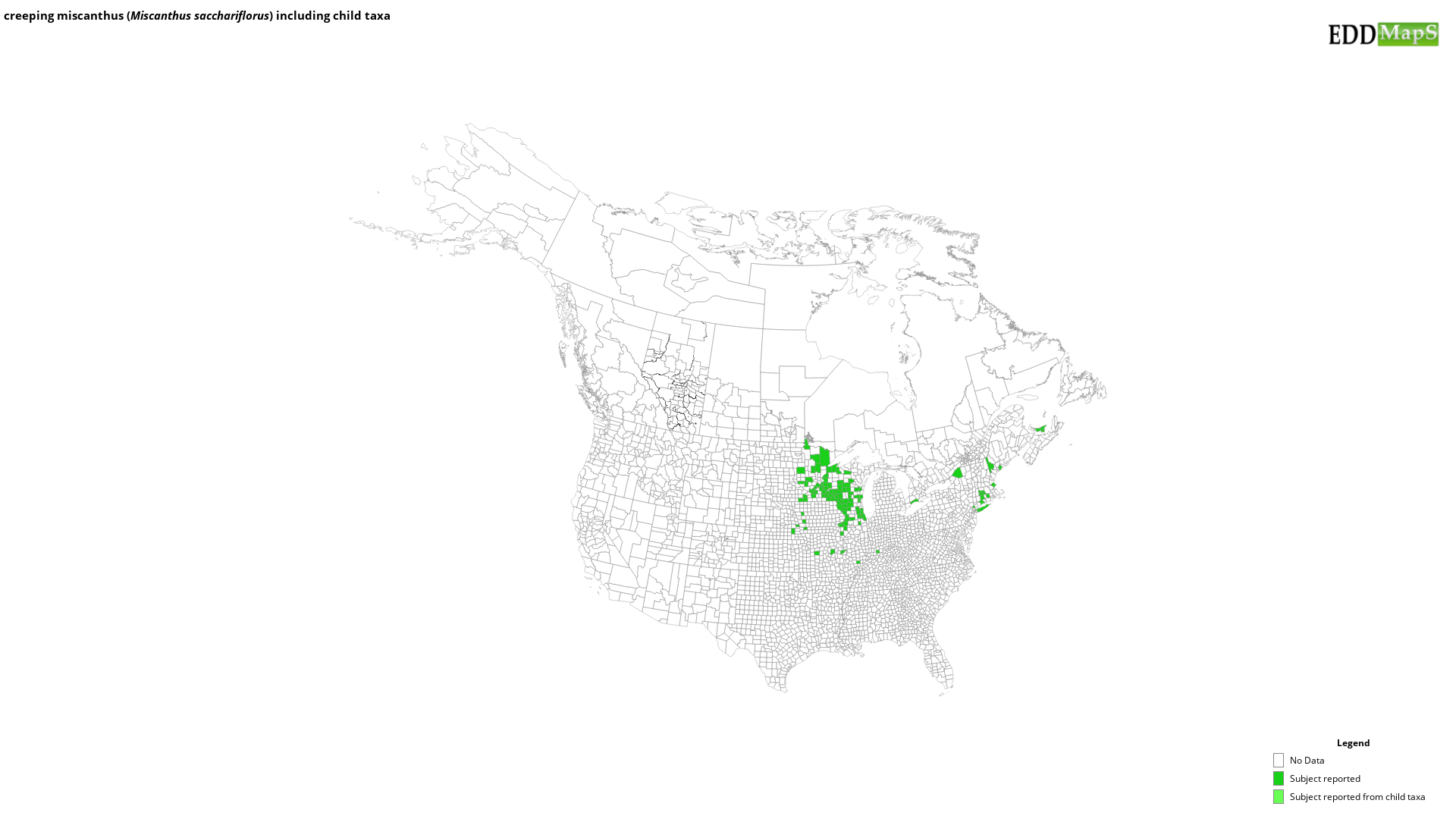creeping miscanthus
(Miscanthus sacchariflorus)
This species is Introduced in the United States
Appearance
Miscanthus sacchariflorus is a genus of tall perennial grass species that grows to about 8 ft (2.5 m) tall. It is native to parts of Eastern Asia. It is currently grown as an ornamental in North America.
Foliage
Leaves are about 3 ft (1 m) long by 1 in (2.5 cm) wide with a silver-white midvein and sharp recurving tips.
Flowers
The inflorescence has soft, white flower heads without awns. It flowers between August and September.
Fruit
The wind-dispersed seeds can spread the plant beyond landscaped areas. It also reproduces vegetatively by rhizomes.
Ecological Threat
M. sacchariflorus can form monocultures in wetter disturbed habitats including marginal croplands, hydro corridors, roadsides, railways, and pond edges. it usually does not tolerate full shade but can grow along forest edges and in openings in the forest canopy.
Citations
Rawlins, K.A., R.L. Winston, C.T. Bargeron, D.J. Moorhead, and R. Carroll. 2018. New Invaders of the Northeast and Northcentral United States. USDA Forest Service, Forest Health Assessment and Applied Sciences Team, Morgantown, West Virginia. FHTET-2017-04. Retrieved from https://bugwoodcloud.org/resource/pdf/FHTET-2017-04_New%20Invaders_NE.pdf
Selected Images
Maps
EDDMapS Distribution - This map is incomplete and is based only on current site and county level reports made by experts, herbaria, and literature. For more information, visit www.eddmaps.org
State Lists - This map identifies those states that have this species on their invasive species list or law.
Invasive Listing Sources
Taxonomic Rank
| Domain: Eukarya |
| Kingdom: Plantae |
| Phylum: Magnoliophyta |
| Class: Magnoliopsida |
| Superorder: Lilianae |
| Order: Poales |
| Family: Poaceae |
| Subfamily: Panicoideae |
| Tribe: Andropogoneae |
| Genus: Miscanthus |
| Miscanthus sacchariflorus |
References
Common Name Reference: USDA, NRCS. 2010. The PLANTS Database. National Plant Data Center, Baton Rouge, LA, USA.
Scientific Name Reference: USDA, NRCS. 2010. The PLANTS Database. National Plant Data Center, Baton Rouge, LA, USA.


